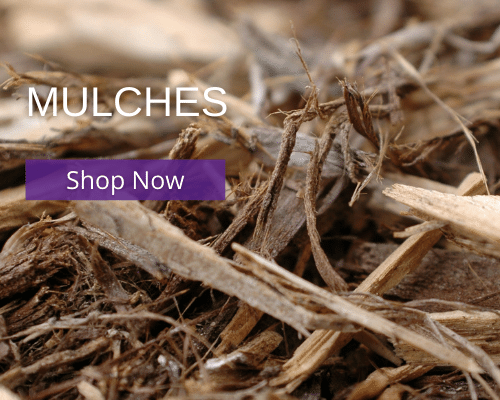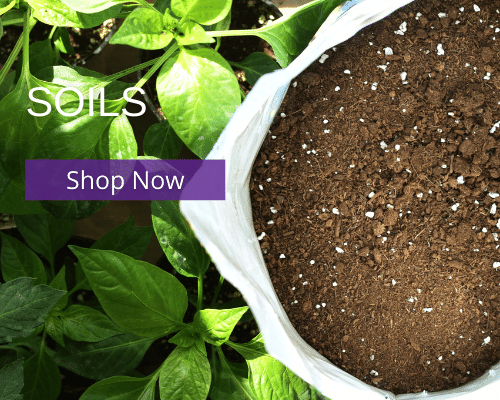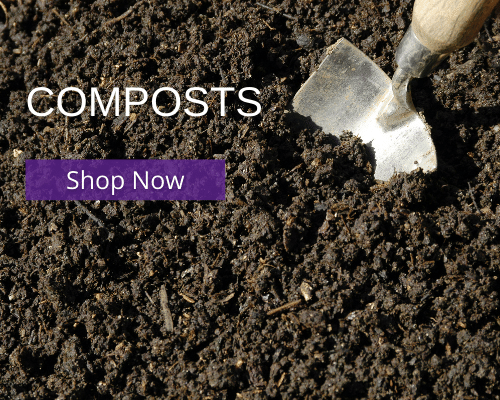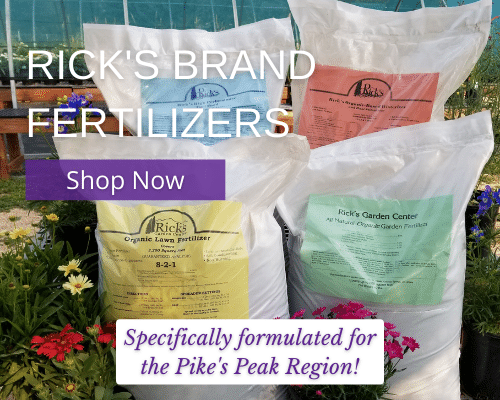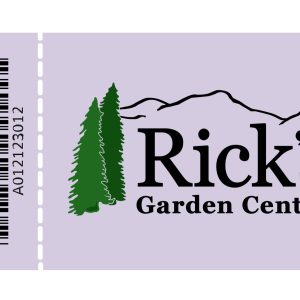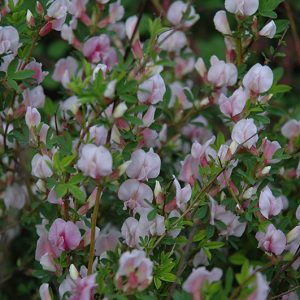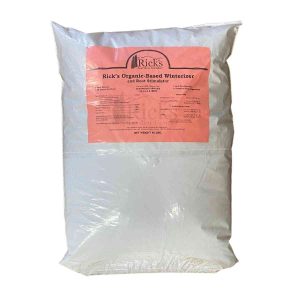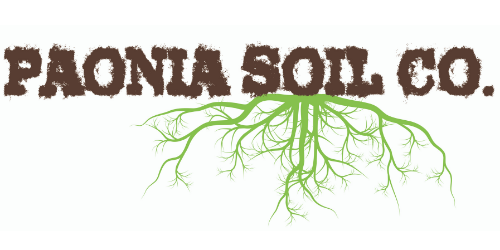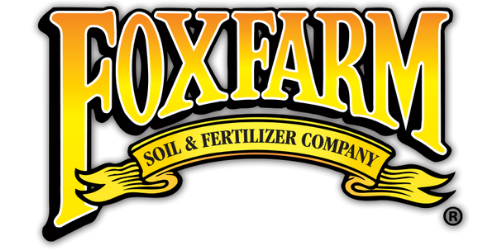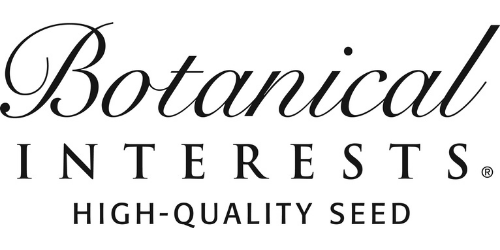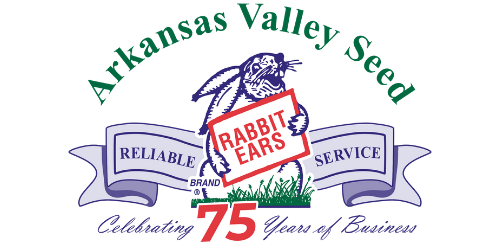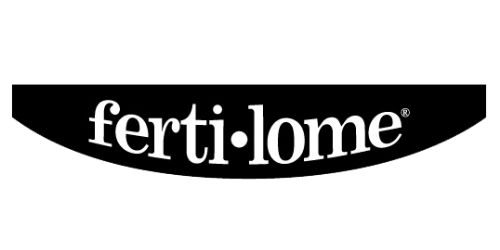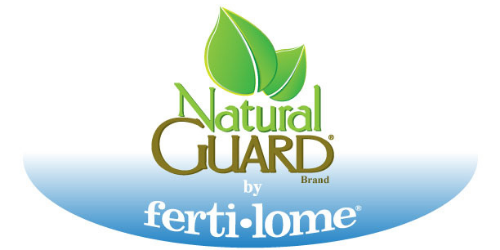Best Sellers
-
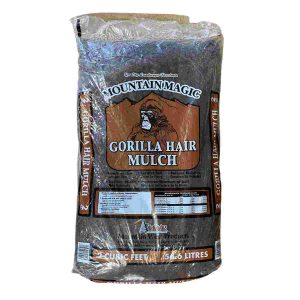
Mountain West Bark Gorilla Hair Mulch 2CuFt
$10.99 -
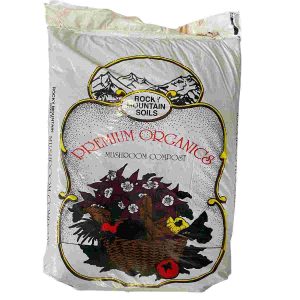
Rocky Mtn. Soils Mushroom Compost 1.25cuft
$5.69 -
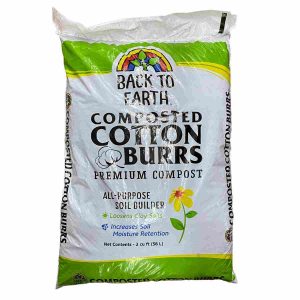
Back to Earth Composted Cotton Burr Blend 2cf
$16.99 -
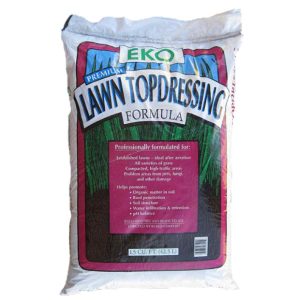
Eko Top Dressing 1.5 cu ft
$9.99 -
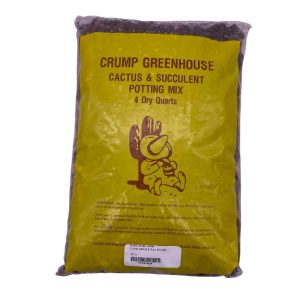
Crump Cactus & Succulent Potting Mix 4qt
$9.99 -
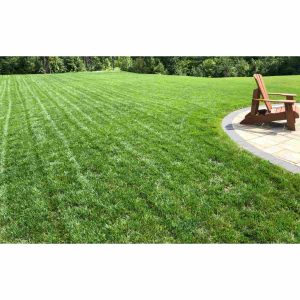
Bulk Tall Fescue Grass Seed AVS 1lb
$6.99 -
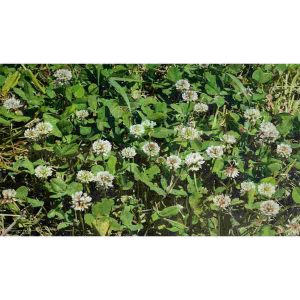
Bulk White Dutch Clover Seed 1lb
$15.99 -
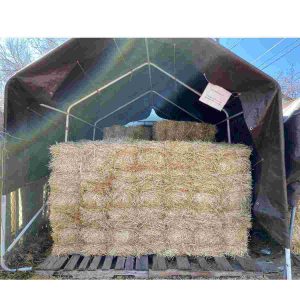
Straw Mulch Bale 18Dx36Lx14H
$15.99 -
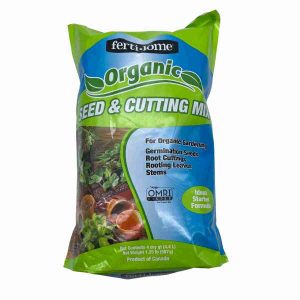
Fertilome Organic Seed&Cutting Mix 4qt
$9.99 -
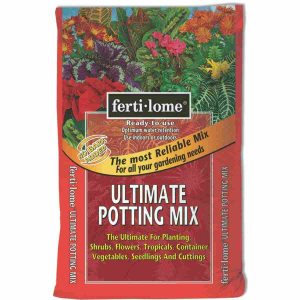
Fertilome Ultimate Potting Mix 50qt
$23.99 -
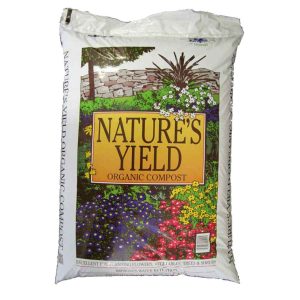
Natures Yield Organic Compost 1.5 cu ft
$10.99 -
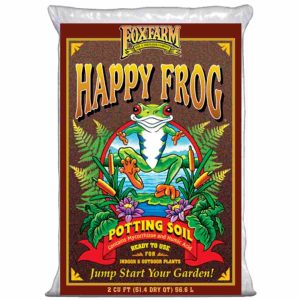
Foxfarm Happy Frog Potting Soil 2Cuft
$33.99
New Arrivals
Featured
Welcome to Rick’s
When you walk into Rick’s Garden Center, it’s our mission to provide you with knowledgeable and friendly service, a warm and welcoming atmosphere and a wide variety of garden products made with the highest quality ingredients. And the occasional Dad jokes.
Since 1948, Rick’s has been serving the Pikes Peak region with knowledge, quality and integrity. Open year-round, we carry a vast assortment of products for your indoor and outdoor gardening needs. The main shop features an amazing selection of houseplants and succulents, along with all the pottery and other items you need to make your home a living jungle. Our nursery is seasonally open spring through fall, offering trees, shrubs and perennials all selected for our specific growing climate.
Family owned and operated, our number one priority at Rick’s is meeting your needs. If there is anything we can do to make your experience more delightful, please let us know and we will do our utmost to make it happen!


LATEST BLOG
AI & The Garden: A Hard NO
If you’re a gardener, you should be aware that relying on AI can be dangerous. Running the AI data centers are detrimental to the environment, consuming 10 times the normal […]
How To Plant Amaryllis & Paperwhites
Our holiday bulbs are here! Make way for Amaryllis & Paperwhites! Because these plants need to be planted about eight to ten weeks in advance, to flower around Christmas, we […]
2025 Fall Donations: Giving Back to the Local Community
By Katherine Placzek November is the month where humans best emulate nature-we participate in the magic of giving without the expectation of receiving in return. I hope you all find […]
OUR BRANDS
Garden Center and Nursery
Ask the pros
(719) 632-8491
Curbside pickup
Serving the pikes peak region since 1948




